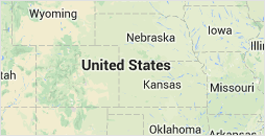Jeson Clarke
PHONE NUMBER : ------
Map

3 Types of Standalone Threat Ratings
When it comes to ballistic protection, not all armor is created equal. One of the most important factors to consider when choosing protective gear is its standalone threat rating. These ratings help determine the level of ballistic resistance offered by a piece of armor—without requiring additional inserts or support panels. Whether you’re law enforcement, military or a security professional, understanding these ratings can be a life-saving detail.
Level IIIA Body Armor
Level 3A body armor is widely used for protection against handgun threats. Certified under NIJ (National Institute of Justice) standards, this rating ensures the armor can stop rounds like .357 SIG and .44 Magnum at relatively close range. It’s a soft armor option, often found in concealable vests or under-uniform setups, offering flexibility and comfort without sacrificing essential protection.
This level is ideal for officers on patrol or private security personnel who face common handgun threats. While it won’t stop rifle rounds, this level body armor offers excellent defense in many urban and civilian contexts. Stay protected with certified level 3A body armor—visit this website to find your perfect fit today!
Level III Armor
Level III standalone armor is designed to stop rifle rounds, including the common 7.62x51mm NATO (.308 Winchester). This rating applies to hard armor plates typically made from steel, ceramic or polyethylene. Unlike level 3A, these plates are rigid and heavier but offer significantly more protection.
Level III is a go-to choice for tactical teams and first responders who may encounter more powerful threats. It’s also commonly used in high-risk scenarios where rifles are a known factor.
Level IV Armor
At the top of the standalone protection scale is Level IV. These plates can stop armor-piercing rifle rounds such as the .30-06 M2 AP. They're typically constructed from advanced materials like ceramic composites and are heavier than Level III, but the protection they offer is unmatched.
Choosing the right standalone threat rating comes down to understanding your operational needs. Whether you're opting for the lightweight mobility of level 3A body armor or the robust defense of Level IV, your protection should always match your mission.
Author Resource:-
Jeson Clarke advises people about body armor, offering insights on protective gear and advanced safety solutions. You can find his thoughts at tactical armor blog.
